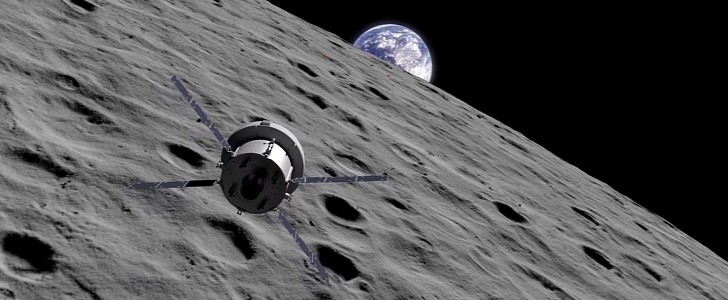NASA has selected three new scientific investigation payload suites to advance understanding of our natural satellite. The agency will land for the first time two of the payloads on the far side of the Moon to gather data about the area as a potential future destination for Artemis astronauts.
While the Apollo 8 astronauts were the first humans to see the far side of the Moon, (the side that always faces away from us - also called the Dark Side of the Moon) when they orbited the Moon in 1968, they never landed on it. The first-ever landing on the other side took place in January 2019 when the Chinese spacecraft Chang'e 4 touched down on the rocky, cold surface.
Now, NASA is going to send for the first time two payloads to the far side of the Moon to pave the way for future lunar missions. The agency chose two separate suites that will land on a large impact crater near the lunar South Pole called the Schrödinger basin.
One of the payloads, the Farside Seismic Suite (FSS), will carry two seismometers that will measure seismic activity. The information gathered could help scientists better understand tectonic activity on the Moon's far side, provide insight on how frequently the lunar far side is taking a hit from small meteorites, and offer more data about the satellite's internal structure.
Because the Moon rotates on its axis once a month, both the near and far sides experience a two-week day and night cycle. As a result of the long nights, temperatures drop significantly. To survive on the far side, FSS will be self-sufficient in terms of independent power, communications, and thermal control.
The other payload, the Lunar Interior Temperature and Materials Suite (LITMS), will be equipped with two instruments, the Lunar Instrumentation for Thermal Exploration with Rapidity pneumatic drill and the Lunar Magnetotelluric Sounder.
With the help of these tools, the LITMS will study the Schrödinger basin's electrical conductivity and heat flow, providing a comprehensive view of the Moon's core. The data collected will add to the seismic information obtained by the FSS. Together, the payloads will offer a more accurate picture of the subsurface of the far side of the Moon.
As part of NASA's Commercial Lunar Payload Services (CLPS) program, the investigations are scheduled to land on the lunar surface in 2024.
Now, NASA is going to send for the first time two payloads to the far side of the Moon to pave the way for future lunar missions. The agency chose two separate suites that will land on a large impact crater near the lunar South Pole called the Schrödinger basin.
One of the payloads, the Farside Seismic Suite (FSS), will carry two seismometers that will measure seismic activity. The information gathered could help scientists better understand tectonic activity on the Moon's far side, provide insight on how frequently the lunar far side is taking a hit from small meteorites, and offer more data about the satellite's internal structure.
Because the Moon rotates on its axis once a month, both the near and far sides experience a two-week day and night cycle. As a result of the long nights, temperatures drop significantly. To survive on the far side, FSS will be self-sufficient in terms of independent power, communications, and thermal control.
The other payload, the Lunar Interior Temperature and Materials Suite (LITMS), will be equipped with two instruments, the Lunar Instrumentation for Thermal Exploration with Rapidity pneumatic drill and the Lunar Magnetotelluric Sounder.
With the help of these tools, the LITMS will study the Schrödinger basin's electrical conductivity and heat flow, providing a comprehensive view of the Moon's core. The data collected will add to the seismic information obtained by the FSS. Together, the payloads will offer a more accurate picture of the subsurface of the far side of the Moon.
As part of NASA's Commercial Lunar Payload Services (CLPS) program, the investigations are scheduled to land on the lunar surface in 2024.

